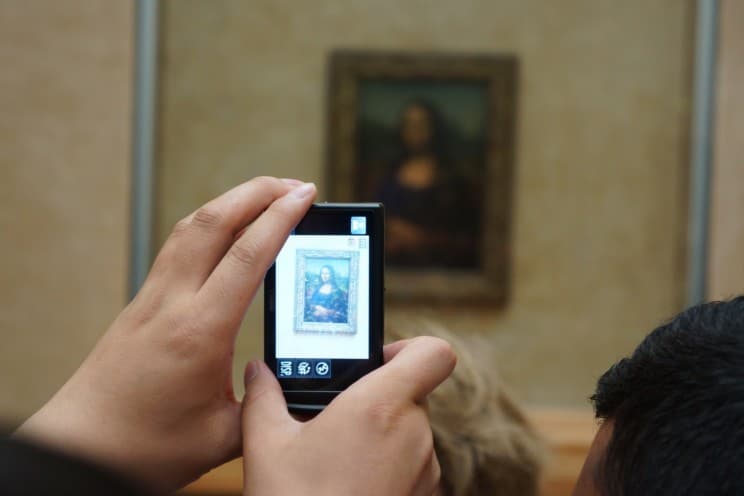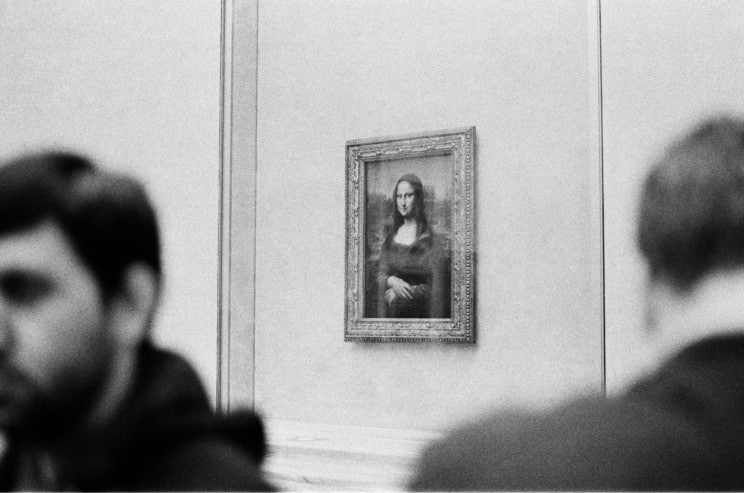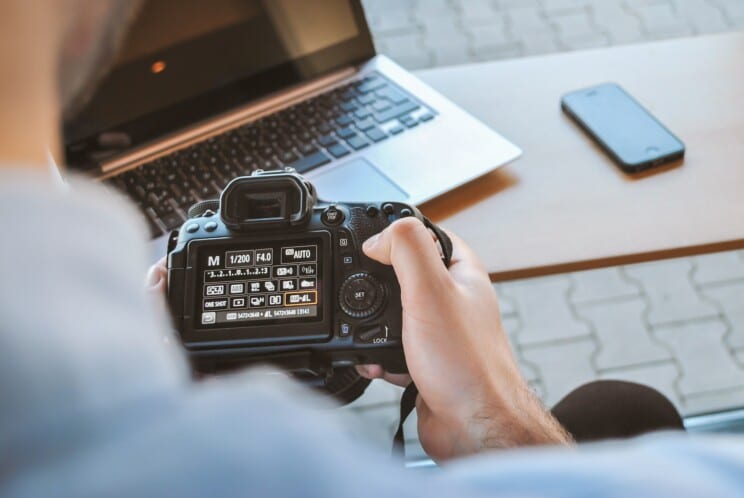Can You Take Pictures of the Mona Lisa?
When it comes to paintings, the Mona Lisa portrait has to come up since it is the most popular painting.
Painted by Leonardo da Vinci, the Mona Lisa is a portrait painted with oil painting on wood. In this blog post, we’ll look at if you can take pictures of the Mona Lisa.
Can You Take Pictures of the Mona Lisa?

Yes, you are permitted to take pictures of the Mona Lisa.
Filming and photography are allowed in the permanent exhibition rooms in the Louver. However, flashes, selfie sticks, or other lighting equipment are not allowed.
Filming and photography are strictly not allowed in the temporary exhibition room of the Louvre.
As a photographer, you need to avoid getting into trouble taking pictures of what you aren’t supposed to take photos of.
Lessons that Portrait Photographers Can Learn From the Mona Lisa

Let’s look at the different details of the Mona Lisa that portrait photographers can take away.
The Pose
Mona Lisa is at ease and relaxed; she also has her hands crossed comfortably. Leonardo used a three-quarter pose instead of a full pose.
Leonardo Positions Mona Lisa’s eyes at a level where you can view the portrait. As you gaze at her eyes, it brings a sense of familiarity to the picture.
For a portrait photographer, you can use the three-quarter-length pose, whereby you ensure your subject is relaxed and allow them to look directly at the camera and turn their body a bit away from the camera.
You and your models should ensure they have something to lean on to avoid them looking awkward. Most important, ensure your model is relaxed.
Composition
Mona Lisa’s composition has put new directions in painting followed for ages. The pyramidal composition is one of the Mona Lisa’s compositions.
The composition shows Mona Lisa with a vast bottom at her arms and hands constructing the front corner. Everything is positioned to draw the eye up her eyes and her smile.
As a portrait photographer, you can use the pyramidal composition; you should make it worth trying.
The Background
The background of the Mona Lisa looks like it’s fading or it’s become blurry. Using blurry was unusual during that time.
Most portrait photographers use this effect by using a large aperture to blur the background, making you, as the viewer, focus on the subject.
The colors of Monalisa were muted, bland, and subtle therefore making you focus on the portrait.
You can use shapes and mirroring colors in the subject’s clothes. As a portrait photographer, you should consider your background to enhance portraits and not detract from your images.
Light
Leonardo uses light to capture the viewer’s eye to the bits of the portrait that he wanted to be highlighted, like the hands and face.
Leonardo positions the face and hands in a contracting manner to balance the image.
He also makes use of shadows to add dimension and depth to the image, especially around the neck of the Mona Lisa, the ripples on the dress, and her arm.
You can work with shadows to produce dimension and depth to your shots.
Framing
In Mona Lisa’s picture, Leonardo used a technique known as framing in photography.
This technique draws a viewer’s eye of an image to your subject. It also makes you add some more context to the portrait.
It would be best to use the framing technique to capture your viewer’s eye to your main subject for a portrait photographer.
Mystery
There is a mystery in Mona Lisa and how Leonardo painted her picture. Using the technique of blurring around the edges of the Mona Lisa gives the potato a mysterious quality.
The mystery Leonardo left in the portrait makes you, as a viewer, ask questions and enter into the image with imagination.
As a portrait photographer, you can leave the mystery in your subject, but you need to be an experienced photographer.
Cloths
Leonardo uses darker clothes that are less obstructive in the portrait. Mona Lisa’s dress has little detail, which highlights her face.
Lack of jewelry or any accessory makes you focus on Mona Lisa’s face, and you won’t get distracted as you view the picture.
Clothes are one of the elements that can distract in a portrait. As a portrait photographer, use clothes that fit the subject and don’t distract a viewer.
Other Articles In This Series
You might be wondering where else you can take photographs. This series of articles might be of interest:
- Can My Neighbor Take Pictures of My Backyard?
- Can You Take Pictures of Atoms?
- Can You Take Pictures of Books in Library?
- Can You Take Pictures of Celebrities?
- Can You Take Pictures of Checks?
- Can You Take Pictures of Coworkers Without Permission?
- Can You Take Pictures of Military Aircraft?
- Can You Take Pictures of Other Galaxies?
- Can You Take Pictures of Other People’s Houses?
- Can You Take Pictures of People’s Cars?
- Can You Take Pictures of People’s License Plates?
- Can You Take Pictures of Police Cars?
- Can You Take Pictures of the Milky Way with an iPhone?
- Can You Take Pictures of the Mona Lisa?
- Can You Take Pictures of the Pentagon?
- Can You Take Pictures of the White House?
- Can You Take Pictures on a Plane?
- Can You Use a Polaroid at Night?
- Why Is No Photography Allowed at the Sistine Chapel?
Final Thoughts
When you visit the Louvre, make sure you take a picture of the Mona Lisa and view the other portraits like the raft of the Medusa and many more.
Enjoy your visit to Louvre and take your time viewing the portraits.






